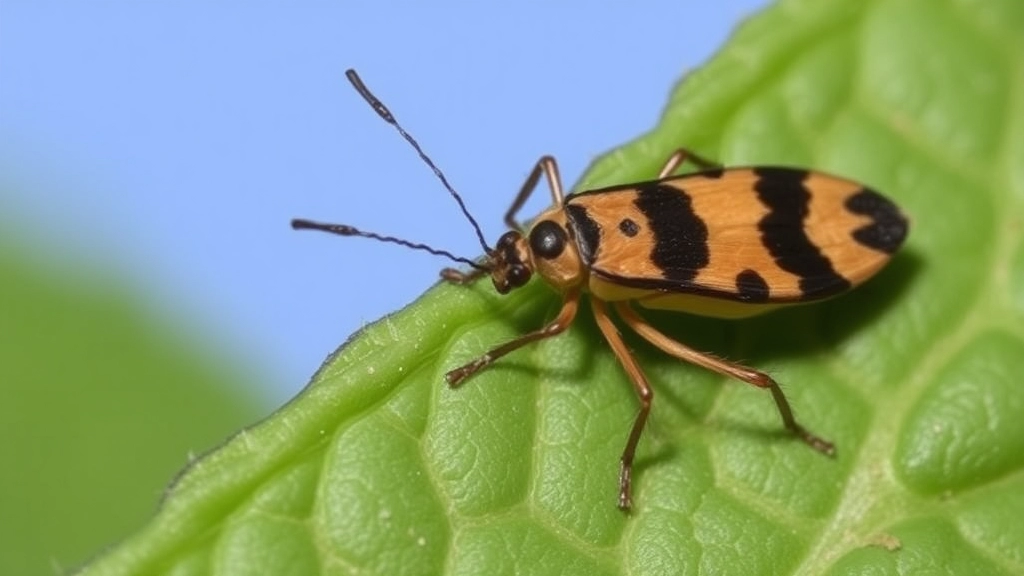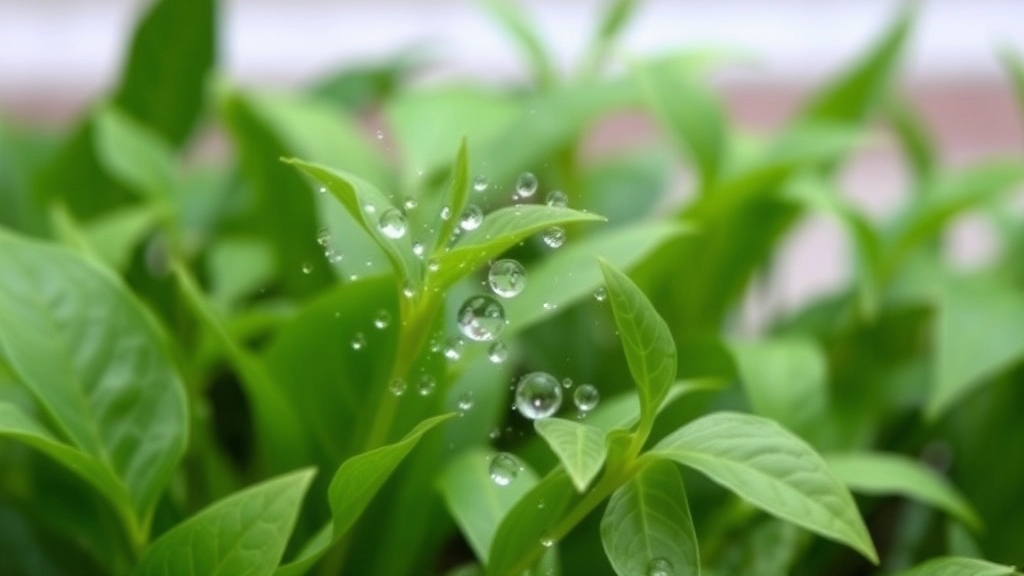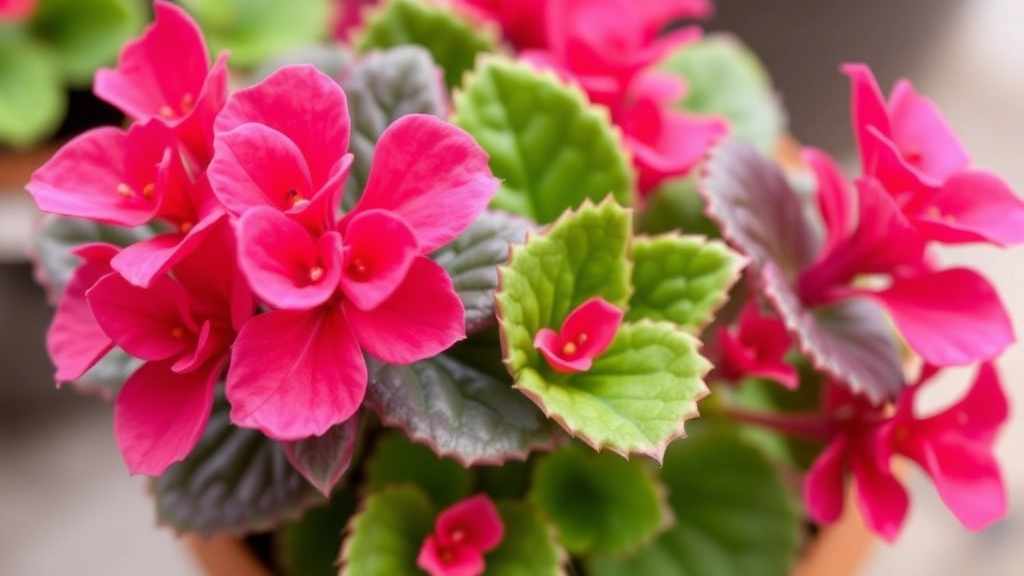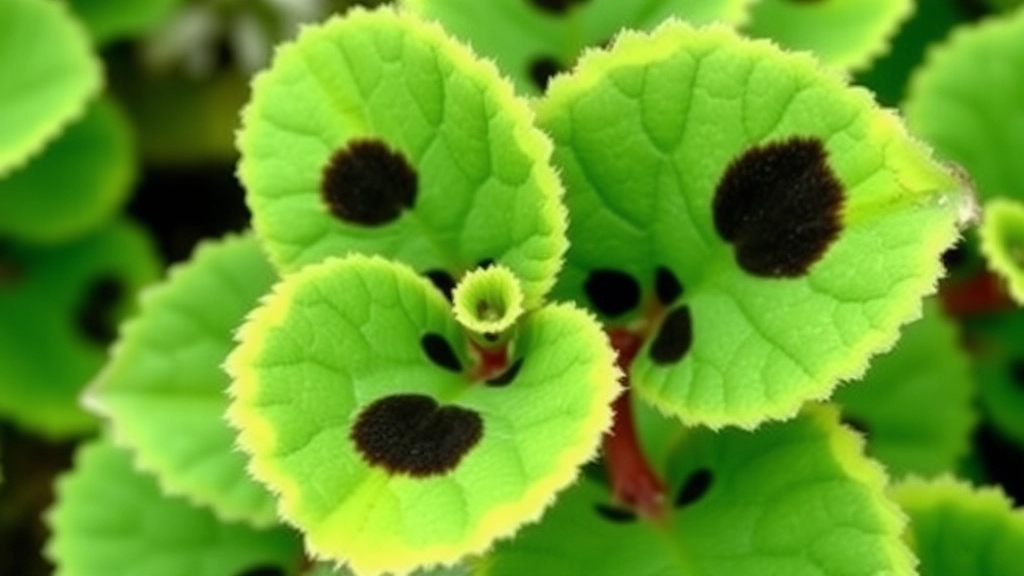Kalanchoe Leaf Issues
Ever noticed black spots on Kalanchoe leaves and wondered what’s going on? You’re not alone. These pesky spots can be a sign of various issues, from fungal infections to improper watering. Let’s dive into the common causes and how to tackle them effectively.
Common Causes
-
Watering Habits
First, check your watering habits. Overwatering is a primary culprit that can lead to root rot and black spots. Ensure your plant gets good drainage and only water when the soil feels dry.
-
Fungal Infections
If the problem persists, consider fungal infections. A fungicide might be necessary to get rid of those black spots on Kalanchoe leaves.
Maintaining Plant Health
Keep your plant healthy by providing adequate light and ventilation.
Have you noticed unsightly black spots appearing on your Kalanchoe leaves? You’re not alone. Many plant enthusiasts encounter this issue, and understanding the common causes is the first step in addressing it.
## Common Causes of Black Spots on Kalanchoe Leaves
**1. Fungal Infections**
Fungal infections are one of the leading culprits behind black spots. They thrive in warm, humid environments, often resulting from overwatering or poor air circulation.
**2. Bacterial Leaf Spot**
Bacterial infections can also lead to dark spots. These usually manifest as water-soaked areas that eventually turn black.
**3. Pest Infestation**
Certain pests, like spider mites and aphids, can damage leaves, resulting in black spots. Their feeding habits stress the plant and make it susceptible to other issues.
**4. Environmental Stress**
Kalanchoes can be sensitive to drastic changes in their environment. Factors such as extreme temperatures, inadequate light, or improper humidity levels can lead to stress, causing black spots to form.
**5. Watering Practices**
Inconsistent watering habits can contribute to the development of black spots. Both overwatering and underwatering can create conditions that encourage fungal and bacterial growth. For more detailed tips on how to manage these issues, you can refer to the [complete care guide for Kalanchoe Beharensis](https://planthq.org/complete-care-guide-for-kalanchoe-beharensis-felt-plant/).
Additionally, if you’re interested in learning about the different varieties of Kalanchoe and their specific care needs, check out this [visual guide and care tips](https://planthq.org/kalanchoe-species-photos-visual-guide-and-care-tips/).
Identifying Fungal Infections

Have you noticed those pesky black spots on your Kalanchoe leaves and wondered if it could be a fungal infection? You’re not alone! Fungal infections are a common concern for plant lovers, and they can wreak havoc on your beloved plants if not addressed promptly.
Signs of Fungal Infections
- Black Spots: These usually start as small dots and can grow larger.
- Wilting Leaves: If your leaves are drooping or losing their firmness, it could be a sign.
- Discolouration: Besides black spots, you might see yellowing or browning around the edges.
- Powdery Residue: Some fungi leave a powdery coating, often white or grey.
Common Fungal Types
- Leaf Spot Fungi: These are notorious for creating those black spots.
- Powdery Mildew: Often appears as a white, powdery substance but can lead to dark spots if untreated.
- Root Rot Fungi: While not directly on the leaves, they can cause overall plant decline, leading to stress and spots.
How to Confirm a Fungal Infection
- Inspect Closely: Look at the underside of leaves and stems for unusual growths.
- Check Soil Moisture: Overwatering can contribute to fungal growth.
- Isolate the Plant: If you suspect a fungal issue, keep it away from your other plants to prevent spreading.
Many Kalanchoe owners often find themselves puzzled by the appearance of black spots on their plants, and one potential culprit could be bacterial leaf spot.
Identifying bacterial leaf spot early is crucial for managing its spread. Here are some common symptoms to look out for:
– **Dark, Water-soaked Spots:** These often start small and can grow larger over time.
– **Yellowing Leaves:** Surrounding tissue may turn yellow, giving the leaves a mottled appearance.
– **Leaf Drop:** Affected leaves may eventually fall off, leading to a sparse appearance.
– **Irregular Shapes:** Unlike fungal spots, bacterial spots tend to be more irregular in shape.
If you notice these symptoms, it’s essential to act quickly to mitigate damage.
Addressing bacterial leaf spot involves a combination of immediate action and long-term care:
1. **Remove Affected Leaves:** Carefully prune away any leaves showing symptoms to prevent further spread.
2. **Improve Air Circulation:** Ensure your Kalanchoe has adequate space around it to allow for airflow, reducing humidity levels that favour bacterial growth.
3. **Adjust Watering Practices:** Water at the base of the plant rather than overhead. This helps keep the leaves dry.
4. **Use Fungicides:** While primarily a bacterial issue, some fungicides can help control secondary infections. Always read labels for suitability.
5. **Sterilize Tools:** Clean your pruning tools with alcohol or a bleach solution to avoid spreading bacteria to healthy plants.
By tackling bacterial leaf spot head-on, you can help your Kalanchoe thrive once more. For more detailed advice on addressing similar issues, you might find our guide on [causes and solutions for black spots on Kalanchoe leaves](https://planthq.org/causes-and-solutions-for-black-spots-on-kalanchoe-leaves/) helpful. Additionally, understanding the [optimal care for Kalanchoe Blossfeldiana growth](https://planthq.org/optimal-care-for-kalanchoe-blossfeldiana-growth/) can further ensure your plant remains healthy.
Pests That Cause Black Spots

Have you ever noticed mysterious black spots appearing on your Kalanchoe leaves? If so, pests might be the culprits. Identifying these pests is crucial for restoring your plant’s health.
Common Pests to Watch For:
- Spider Mites: These tiny arachnids can cause significant damage. Look for fine webbing and tiny black or brown spots.
- Aphids: These small, soft-bodied insects often cluster on the undersides of leaves. They can leave behind sticky residue that attracts sooty mould.
- Mealybugs: Resembling small cotton balls, mealybugs can cause yellowing and black spots due to their feeding habits.
- Fungus Gnats: While they primarily affect the soil, their larvae can damage roots, leading to overall plant stress and black spots on leaves.
Signs of Infestation:
- Visible Insects: Check the undersides of leaves and between leaf joints.
- Sticky Residue: A sign of aphids or mealybugs, which can lead to further issues like sooty mould.
- Leaf Discoloration: Yellowing or black spots often accompany pest infestations.
- Webbing: Look for fine webs, especially with spider mites.
What to Do:
- Inspect Regularly: Make it a habit to check your Kalanchoe for pests.
- Use Insecticidal Soap: This can effectively control many pests without harming the plant.
- Introduce Beneficial Insects: Ladybugs and lacewings can help keep pest populations in check.
- Maintain Good Air Circulation: This helps prevent infestations, especially with spider mites.
Environmental Stress Factors
Have you noticed black spots on your Kalanchoe leaves, but can’t pinpoint the cause? Environmental stress factors could be the culprit.
Kalanchoes, like many succulents, are sensitive to their surroundings. Changes in temperature, humidity, and light can significantly impact their health.
Key Environmental Stressors
- Temperature Fluctuations
Kalanchoes thrive in temperatures between 18°C and 24°C.
Sudden drops or spikes can shock the plant, leading to black spots. - Humidity Levels
These plants prefer low humidity.
Excess moisture in the air can promote fungal growth, resulting in black spots. - Light Conditions
Insufficient light can weaken the plant, making it more susceptible to diseases.
Conversely, too much direct sunlight can scorch the leaves, causing dark patches. - Air Circulation
Poor air circulation can trap humidity around the leaves.
This creates a perfect environment for fungal infections.
Signs of Environmental Stress
- Wilting or drooping leaves
- Black or brown spots appearing suddenly
- Leaf drop
To mitigate these stress factors, ensure your Kalanchoe is in a stable environment.
Adjust the temperature, maintain proper humidity levels, and provide adequate light. For more detailed guidance, check out our tips on treating black spots on Kalanchoe leaves and our guide on why Kalanchoe flowers may be wilting.
Watering Practices to Prevent Black Spots

Are you worried about those pesky black spots showing up on your Kalanchoe leaves?
One of the key culprits behind this issue is improper watering.
Getting your watering practices right can make all the difference. Here’s how to keep your Kalanchoe healthy and happy:
- Check the Soil Moisture: Before watering, stick your finger about an inch into the soil. If it feels dry, it’s time to water. If it’s still moist, hold off for a bit.
- Water Thoroughly: When you do water, make sure to soak the soil until water drains from the bottom. This encourages deep root growth and prevents shallow watering, which can lead to stress.
- Avoid Overwatering: Kalanchoes are succulents and prefer to dry out between waterings. Too much water can lead to root rot and, subsequently, those black spots.
- Use Well-Draining Soil: A good potting mix specifically designed for succulents will help excess water drain away quickly.
- Consider Pot Drainage: Ensure your pot has drainage holes. This allows any excess water to escape, keeping your plant’s roots safe.
- Water Less in Winter: During the colder months, your Kalanchoe needs less water. Cut back on your watering schedule to avoid soggy soil.
By following these practices, you can significantly reduce the chances of black spots appearing on your Kalanchoe leaves.
Effective Treatment Methods
When you discover black spots on your Kalanchoe leaves, it can be concerning. You might wonder, “What can I do to save my plant?” Thankfully, there are effective treatment methods to address this issue.
1. Fungal Infections
If you suspect fungal infections, here’s how to tackle them:
- Remove Affected Leaves: Start by pruning any leaves displaying black spots. This helps prevent the spread of the infection.
- Fungicide Application: Use a suitable fungicide, ensuring it’s safe for Kalanchoe. Follow the instructions carefully for optimal results.
- Improve Air Circulation: Ensure your plant has good airflow by spacing it appropriately from other plants.
2. Bacterial Leaf Spot
For bacterial infections, consider these steps:
- Isolation: Move the affected plant away from others to prevent contagion.
- Copper-Based Treatments: Apply a copper-based bactericide, which can effectively manage bacterial leaf spot.
- Avoid Overhead Watering: Water at the base of the plant to keep leaves dry.
3. Pest Management
If pests are the culprits:
- Insecticidal Soap: Treat your Kalanchoe with insecticidal soap to eliminate pests like aphids or spider mites.
- Neem Oil: This natural solution can help deter a variety of pests while being gentle on the plant.
4. Environmental Adjustments
Sometimes, the environment plays a role:
- Adjust Lighting: Ensure your Kalanchoe receives adequate light without direct scorching sun.
- Temperature Control: Maintain a consistent temperature, avoiding extremes that stress the plant.
5. Watering Adjustments
Proper watering is crucial:
- Check Soil Moisture: Make sure the soil dries out between waterings. Overwatering can lead to root rot and exacerbate black spots.
- Use Well-Draining Soil: Ensure the potting mix allows for proper drainage to prevent waterlogged conditions.
Preventive Measures for Healthy Kalanchoe Leaves

So, you’ve spotted those pesky black spots on your Kalanchoe leaves, and you’re wondering how to keep them at bay.
Let’s chat about some practical preventive measures that can help keep your plant thriving and spot-free.
1. Proper Watering Techniques
- Water Wisely: Always water your Kalanchoe when the top inch of soil feels dry. Overwatering can lead to root rot, which often shows up as black spots.
- Drainage Matters: Ensure your pot has good drainage. Standing water is a no-go!
2. Optimal Light Conditions
- Bright, Indirect Light: Kalanchoes love bright light but avoid direct sunlight, which can scorch their leaves.
- Rotate Your Plant: Give all sides equal sun exposure to promote even growth.
3. Air Circulation
- Space it Out: Don’t crowd your Kalanchoe with other plants. Good air circulation helps prevent fungal infections.
- Indoor Ventilation: If your plant is indoors, make sure the room has decent airflow.
4. Regular Cleaning
- Dust Off the Leaves: Wipe the leaves with a damp cloth every few weeks to remove dust. This helps the plant breathe and prevents pests.
- Inspect Often: Keep an eye out for any signs of trouble. Early detection is key!
5. Soil Quality
- Use Well-Draining Soil: A cactus or succulent mix is ideal. This prevents water retention that can lead to black spots.
- Consider Repotting: If your plant is root-bound, it might be time to repot into a larger container with fresh soil.
6. Fertilization
- Feed Sparingly: Use a balanced, diluted fertilizer during the growing season. Too much can stress your plant and lead to issues.
When to Repot Your Kalanchoe
Have you noticed your Kalanchoe struggling to thrive despite your best care efforts? One common reason could be that it’s time for a repot. Understanding when to repot your Kalanchoe is essential for its overall health and growth.
Signs That Indicate It’s Time to Repot:
- Root Bound: If you see roots emerging from the drainage holes or circling the surface of the soil, it’s a clear sign your plant needs more space.
- Stunted Growth: If your Kalanchoe has stopped growing or is producing fewer leaves and flowers, it might be due to depleted nutrients in its current pot.
- Soil Degradation: Over time, soil can compact and lose its ability to retain moisture and nutrients. If the soil looks dry and crumbly, it’s time for a change.
- Water Drainage Issues: If water is pooling on the surface and not draining well, your plant may require fresh soil to improve drainage.
Best Time to Repot:
- Spring: The ideal time to repot your Kalanchoe is during the spring when the plant is entering its active growth phase. This allows it to recover quickly from the stress of repotting.
Steps to Repot Your Kalanchoe:
- Choose the Right Pot: Select a pot that is one size larger than the current one, ensuring it has drainage holes.
- Prepare Fresh Soil: Use a well-draining potting mix, ideally one designed for succulents.
- Gently Remove the Plant: Carefully take your Kalanchoe out of its old pot, loosening the roots if necessary.
- Place in New Pot: Position the plant in the centre of the new pot and fill in with fresh soil, ensuring the roots are well covered.
- Water Sparingly: After repotting, water lightly to help settle the soil but avoid overwatering.
For more detailed tips on planting Kalanchoe in a pot or understanding why your Kalanchoe leaves are drying out, be sure to check out our comprehensive guides.
Monitoring and Maintenance Tips
So, you’ve tackled the causes of those pesky black spots on your Kalanchoe leaves. Now, let’s dive into how to keep an eye on your plant and maintain its health.
Why Monitor?
Keeping tabs on your Kalanchoe is crucial. Regular monitoring helps you catch issues before they escalate. Plus, it’s a great way to connect with your plant and understand its needs better.
FAQs About Black Spots on Kalanchoe Leaves
What causes black spots on Kalanchoe leaves?
Black spots on Kalanchoe leaves can be caused by several factors, including fungal infections, pests, and improper watering practices.
How can I identify a fungal infection on my Kalanchoe?
Signs of fungal infections include black spots that start as small dots and grow larger, wilting leaves, discoloration such as yellowing or browning around the edges, and sometimes a powdery residue on the leaves.
What types of fungi commonly affect Kalanchoe plants?
Common fungi that affect Kalanchoe plants include leaf spot fungi, powdery mildew, and root rot fungi. These can cause black spots and other symptoms like white powdery substances or overall plant decline.
How do I confirm if my Kalanchoe has a fungal infection?
You can confirm a fungal infection by closely inspecting the undersides of leaves and stems for unusual growths, checking soil moisture levels to avoid overwatering, and isolating the plant to prevent the spread of the infection.
What pests should I watch for that might cause black spots on Kalanchoe leaves?
Common pests include spider mites, aphids, mealybugs, and fungus gnats. These pests can cause visible damage, sticky residue, leaf discoloration, and webbing.
How can I manage pest infestations on my Kalanchoe?
Regular inspection, using insecticidal soap, introducing beneficial insects like ladybugs, and maintaining good air circulation can help manage pest infestations.
How should I water my Kalanchoe to prevent black spots?
Water your Kalanchoe only when the top inch of soil feels dry, water thoroughly until water drains from the bottom, avoid overwatering, use well-draining soil, ensure pot drainage, and reduce watering in winter.
What preventive measures can I take to keep my Kalanchoe healthy?
Preventive measures include proper watering techniques, providing optimal light conditions, ensuring good air circulation, regular cleaning, using well-draining soil, and fertilizing sparingly during the growing season.
Why is good air circulation important for my Kalanchoe?
Good air circulation helps prevent fungal infections and pest infestations. Ensure your Kalanchoe is not crowded with other plants and that indoor environments have decent airflow.
How often should I clean my Kalanchoe leaves?
Wipe the leaves with a damp cloth every few weeks to remove dust. This helps the plant breathe better and prevents pests from settling on the leaves.
What type of soil is best for Kalanchoe plants?
Well-draining soil, such as a cactus or succulent mix, is ideal for Kalanchoe plants as it prevents water retention that can lead to black spots and root rot.
How often should I fertilize my Kalanchoe?
Fertilize sparingly with a balanced, diluted fertilizer during the growing season. Over-fertilization can stress the plant and lead to issues like black spots.
References
-
Understanding and Managing Fungal Diseases in Plants
-
Spider Mites: Identification and Control
-
How to Water Succulents Correctly
